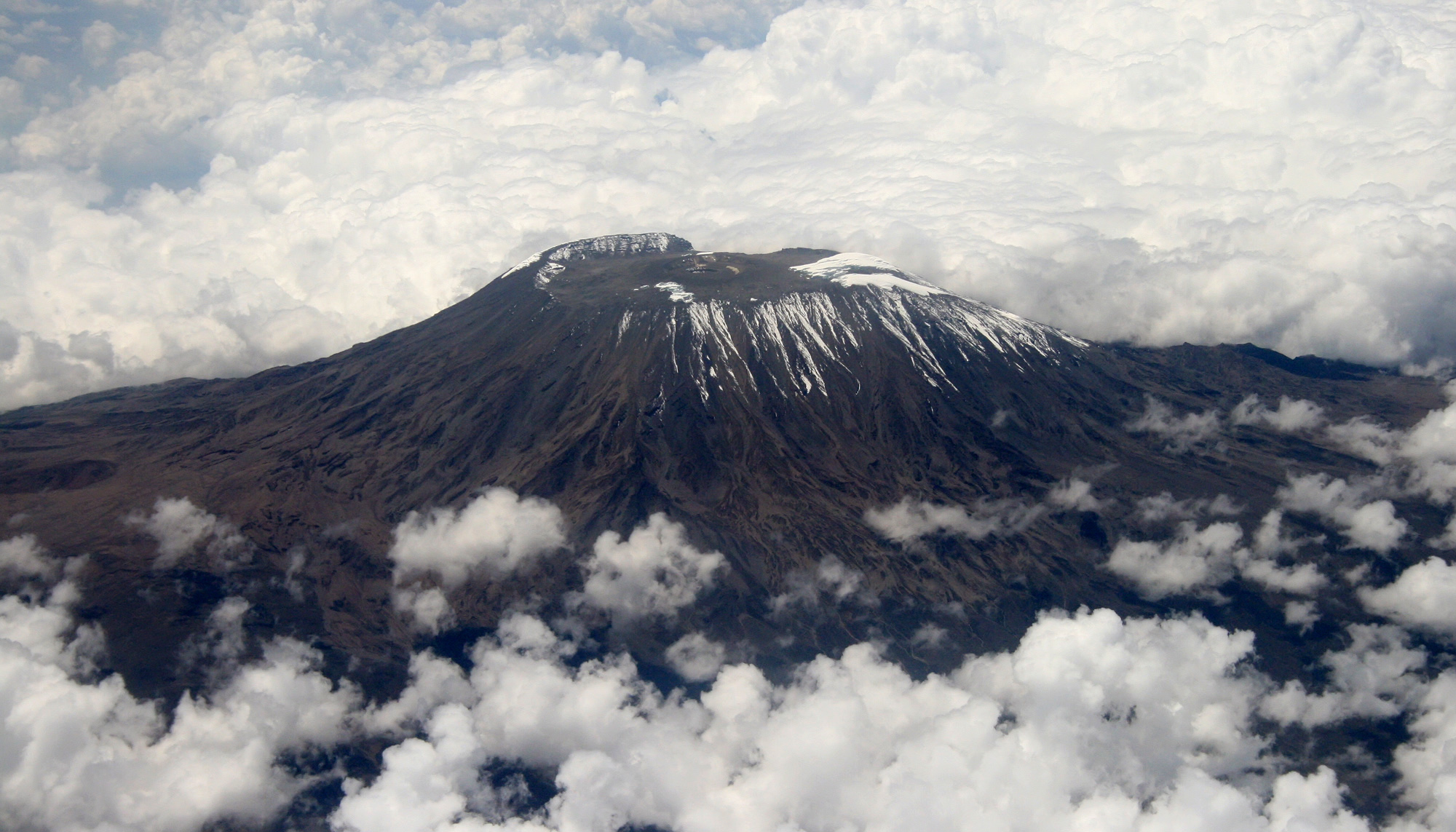What is the Weather on Kilimanjaro?

Kilimanjaro is big enough to have its own weather pattern.
Due to Tanzania’s proximity to the equator (between 1 and 11.45 degrees latitude south of the Equator and 29.20 and 40.35 degrees longitudes east), this region does not experience the extremes of winter and summer weather, but rather dry and wet seasons. The local Weather conditions on Kilimanjaro can be somewhat unpredictable to say the very least. Rainfall varies from 2100 mm per year in the rainforest belt to less than 120 mm per year in the summit zone. Similarly, daily temperature changes are unexpected when compared to normal weather cycles, and are largely dependent on Altitude
Mount Kilimanjaro has five major ecological zones, each approximately 3,280 feet (1,000 m) in altitude. Each zone is subject to a corresponding decrease in rainfall, temperature and life as the altitude increases. At the beginning of the climb, at the base of the mountain, the average temperature is around 70°F to 80°F (27°C to 32°C). From there, the temperatures will decrease as you move through Mount Kilimanjaro’s ecological zones. At the summit, Uhuru Peak, the night time temperatures can range between 0°F to -15F (-18°C to -26°C). This make Kilimanjaro weather very dynamic and you should always be prepared for wet days and cold nights.
Mount Kilimanjaro has five major ecological zones, each approximately 3,280 feet (1,000 m) in altitude. Each zone is subject to a corresponding decrease in rainfall, temperature and life as the altitude increases. At the beginning of the climb, at the base of the mountain, the average temperature is around 70°F to 80°F (27°C to 32°C). From there, the temperatures will decrease as you move through Mount Kilimanjaro’s ecological zones. At the summit, Uhuru Peak, the night time temperatures can range between 0°F to -15F (-18°C to -26°C). This make Kilimanjaro weather very dynamic and you should always be prepared for wet days and cold nights.
NB: Provided that February through May is long rain season mountaineers climb this mountain to the top without any problem so long as they have all required climbing gears.
Weather Conditions near the base of the mountain tend to be tropical to semi-temperate and are relatively stable all year round. The lower plains are hot and dry with average temperatures of around 90 degrees Fahrenheit. As one heads away from the Lower Plains towards the Rain Forest, conditions become increasingly warm and humid.
Mount Kilimanjaro is divided into five distinct zones: Cultivated farmlands on the lowest levels, next is the rainforest zone, followed by heath and moorland with alpine vegetation, and just before the barren, snowy summit is lunar-like desert. The climate and animal life is dependent on the zone.

